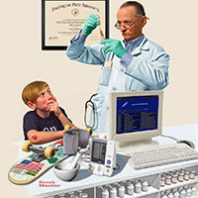
Thin ice
Being put to the test at the ground zero of climate change
There’s the day the polar bear mangled the meteorological instruments. Or when a massive storm smashed two humidity sensors. Days of howling winds, extremely limited visibility, and weather so cold that power cords snapped like twigs.
For Von P. Walden, a professor in Washington State University’s Department of Civil and Environmental Engineering, the most exciting day as part of the Norwegian Young Sea ICE Cruise (N-ICE2015) team was last May when the thin layer of Arctic sea ice on which the researchers were working started breaking up.
Wearing a Regatta suit … » More …









